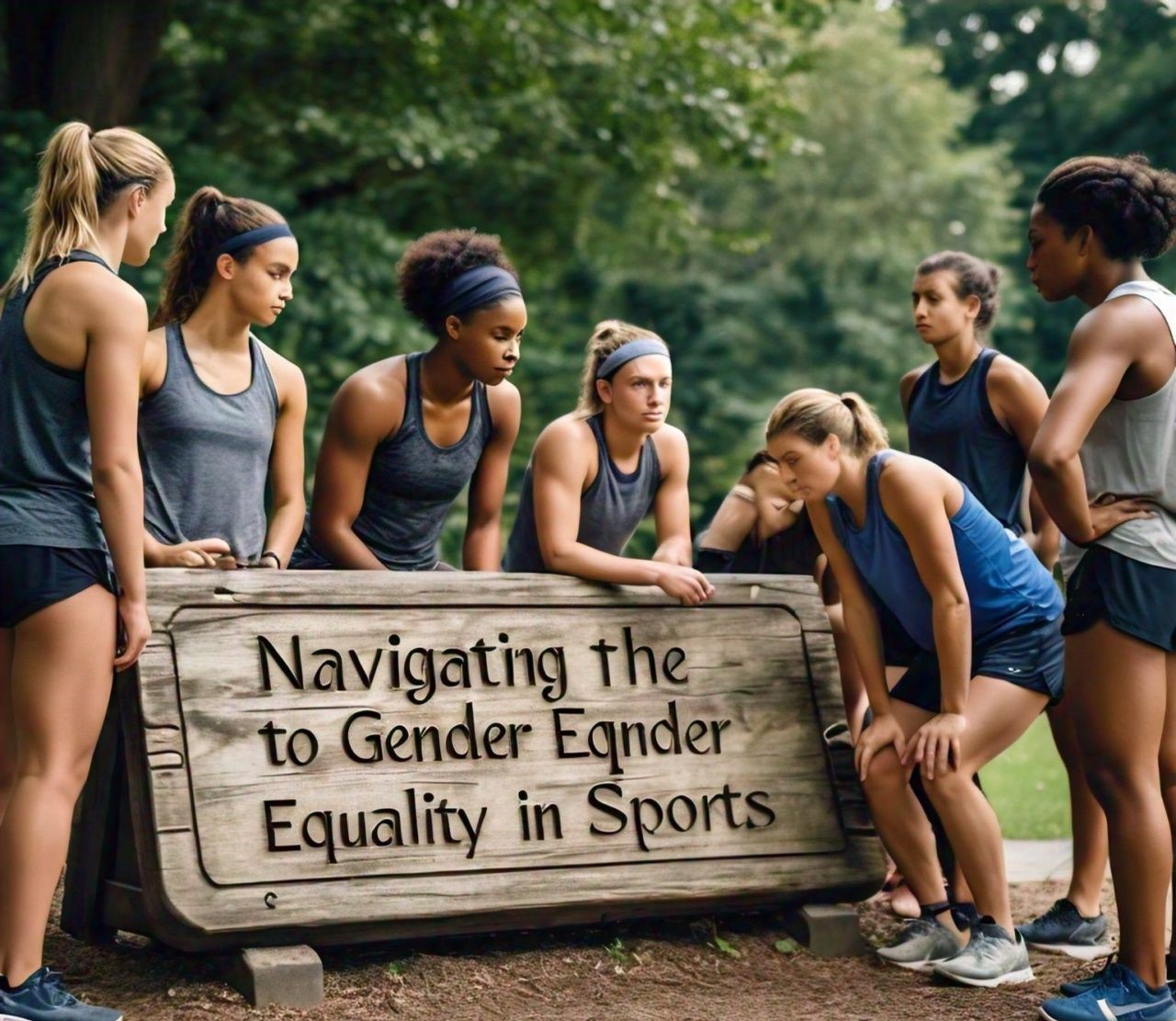Navigating the Path to Gender Equality in Sports Leave a comment
Gender equality in sports is a topic that has combined significant attention over the past few decades. As societal mean evolve and the fight for equal rights gains momentum, the world of sports has become a critical battleground for gender equality. This article explores the current state of gender equality in sports, delving into historical context, present-day challenges and future prospects.
Historical Context of Gender Inequality in Sports
Historically, women have faced numerous barriers to participation in sports. For many years, sports were considered a male-dominated field and women were often excluded from competitive activities. The early 20th century saw limited opportunities for female athletes primarily due to societal beliefs about femininity and physical capabilities. Women who did participate often faced analysis and were not taken seriously.
The turning point came in 1972 with the passage of Title IX in the United States, which prohibited sex-based discrimination in federally funded education programs including athletics. This landmark measure led to a dramatic increase in female participation in sports at the high school and collegiate levels. Despite this progress, gender disparities persisted, especially in terms of funding, media coverage and professional opportunities.
Barriers to Gender Equality in Sports
Funding Disparities
One of the most prominent barriers to gender equality in sports is the disparity in funding between male and female programs. Male sports teams often receive significantly more financial support, leading to better facilities, equipment, coaching and travel accommodations. This inequity starts at the grassroots level and extends to professional leagues. For example, the prize money for men’s events frequently surpasses that of women’s events by highlighting the financial gap in sports.
Media Coverage
Media representation plays a important role in shaping public perception and interest in sports. Unfortunately, female athletes receive considerably less media coverage compared to their male counterparts. Studies have shown that women’s sports account for a small fraction of total sports media coverage often relegated to secondary status or covered in ways that emphasize their appearance over their athletic accomplishments. This lack of visibility hampers efforts to generate sponsorships and public support for women’s sports.
Professional Opportunities
While there have been notable advancements, professional opportunities for female athletes remain limited. Many women in sports struggle to secure professional contracts and those who do often face lower salaries and fewer permission deals than male athletes. In some sports, women are forced to compete internationally to find competitive opportunities and fair compensation. The distinction in professional leagues, such as the differences between the NBA and WNBA, demonstrate the challenges female athletes face in achieving parity.
Cultural and Societal Norms
Cultural and societal norms continue to influence attitudes towards women in sports. Traditional gender roles often discourage girls from participating in sports leading to lower levels of engagement and fewer opportunities to develop athletic skills from a young age. Additionally, female athletes frequently encounter stereotypes and favoritism that undermine their achievements and question their permissibility as competitors. These societal pressures can deter girls and women from pursuing sports careers and hinder progress toward gender equality.
Advancements Toward Gender Equality
Policy Interventions
Governments and sports organizations have implemented various policies to address gender inequality in sports. Title IX in the United States remains one of the most influential pieces of legislation ensuring equal opportunities for female athletes in educational institutions. Additionally, international bodies like the International Olympic Committee (IOC) have introduced initiatives to promote gender equality, such as increasing female representation in leadership positions and ensuring equal participation in the Olympic Games.
Grassroots Initiatives
Grassroots initiatives play a crucial role in fostering gender equality in sports. Organizations and programs aimed at increasing female participation at the community level provide girls with access to sports facilities, coaching and mentorship. These initiatives help break down barriers and create pathways for young girls to pursue sports and contributing to a more equitable sporting landscape.
Role Models and Representation
The presence of successful female athletes serves as powerful inspiration for aspiring young athletes. Role models like Serena Williams, Simone Biles and Megan Rapinoe have split stereotypes and demonstrated that women can excel in sports at the highest level. Their achievements not only inspire the next generation but also challenge societal norms and perceptions about women in sports. Increased visibility and representation of female athletes in media and marketing campaigns further contribute to changing attitudes and promoting gender equality.
Corporate Sponsorship and Support
Corporate sponsorship and support are crucial for advancing gender equality in sports. Companies that invest in women’s sports help bridge the funding gap and provide female athletes with the resources they need to succeed. Sponsorships also raise the profile of women’s sports and attract new fans and audiences. High-profile approvals of female athletes and women’s sports teams signal to the broader public that women’s sports are valuable and worthy of attention.
The Future of Gender Equality in Sports
Equal Pay for Equal Play
The fight for equal pay remains at the forefront of the gender equality movement in sports. Female athletes across various disciplines have advocated for pay equity, emphasizing that their dedication, talent and contributions are on coequality with those of male athletes. Efforts to achieve equal pay have gained traction with some organizations and leagues implementing measures to reduce salary difference . Continued justification and support from fans, sponsors and policymakers are essential to achieving true pay equity.
Increased Investment in Women’s Sports
Sustained investment in women’s sports is necessary to create lasting change. This includes not only financial support but also investments in infrastructure, marketing and promotion. By prioritizing women’s sports, stakeholders can help build robust professional leagues, enhance the quality of competition and ensure that female athletes receive the recognition and opportunities they deserve. Investing in women’s sports is an investment in the future of sports as a whole, promoting diversity, extensive and excellence.
Breaking Down Stereotypes
Challenging and dismantling stereotypes about women in sports is crucial for achieving gender equality. Efforts to change societal attitudes must begin at a young age, encouraging girls to participate in sports and fostering an environment that values their contributions. Education and awareness campaigns can help shift perceptions and highlight the importance of gender equality in sports. By celebrating the achievements of female athletes and promoting positive role models, society can create a more inclusive and supportive culture for women in sports.
Leveraging Technology and Innovation
Technology and innovation offer new opportunities to advance gender equality in sports. Digital platforms and social media provide female athletes with direct channels to connect with fans, share their stories and build their brands. Virtual training programs and online communities can expand access to sports resources and support networks, particularly for those in underserved areas. Embracing technological advancements can help level the playing field and create more equitable opportunities for female athletes.
Conclusion
Gender equality in sports is an ongoing journey that requires collective effort and commitment from all stakeholders. While significant progress has been made by challenges persist in funding, media coverage, professional opportunities and societal attitudes. By continuing to advocate for policy changes, supporting grassroots initiatives, celebrating role models, and investing in women’s sports, we can work towards a future where gender equality is the pattern in the sporting world.
Achieving gender equality in sports is not just about fairness it is about unlocking the full potential of athletes, enriching the sports experience for all and creating a more inclusive society. As we move forward, let us strive to break down barriers, challenge stereotypes and build a sports culture that values and respects the contributions of women. Together, we can ensure that future generations of athletes, regardless of gender, have the opportunity to thrive and excel in the world of sports.





















